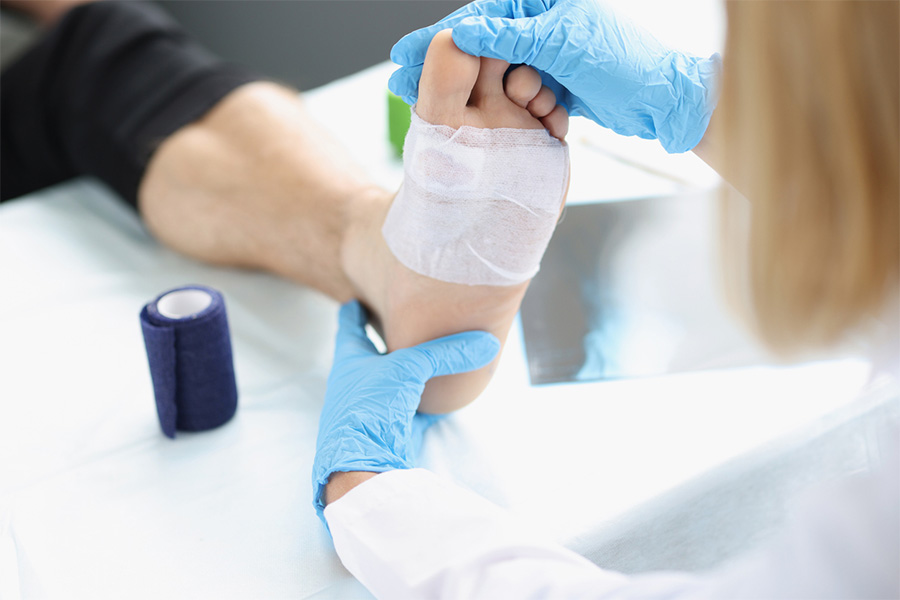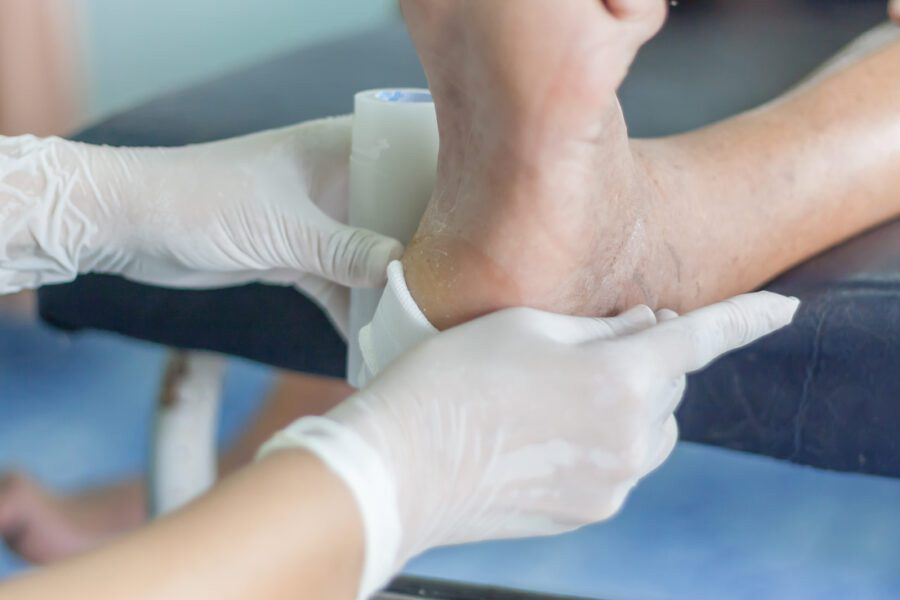As if receiving a diabetes diagnosis weren’t devastating enough, the slew of complications lying in wait make living with the disease especially challenging both physically and emotionally. Among the many things you have to brace yourself for is the risk of diabetic foot ulcers which, when left untreated, can lead to further (and serious) complications.
Let’s discuss the different types of diabetic foot ulcers – the very reasons you need to make sure your blood sugar levels are effectively managed and you should get your feet checked regularly by a podiatrist (foot doctor).
Neuropathic Ulcers
Neuropathic ulcers, which develop as a result of peripheral neuropathy, typically occur on pressure areas of the foot, such as the tips of the toes, their surrounding areas, and the bottom of the foot. The nerve damage brought on by peripheral neuropathy results in loss/lack of sensation (i.e., you can have a scrape or cut in your foot and not know it), which then leads to extended microtrauma, breakdown of tissue, and ultimately, ulceration.
Ischemic Ulcers
Ischemic ulcers, also known as arterial ulcers, form as a result of poor perfusion – when nutrient-rich blood is unable to flow into your lower extremities.
Typically occurring on the heel and toes, ischemic ulcers are often slow to heal and can lead to serious complications (e.g., infection, tissue death, and amputation) if left untreated. Ischemic wounds are usually pink in color and may form a scab.
Neuroischemic Ulcers
Neuroischemic ulcers, which are a combination of both neuropathic and ischemic ulcers, occur when there is both nerve damage and poor blood circulation. The most serious type of diabetic ulcer, a neuroischemic ulcer can also lead to amputation if left untreated.
Common sites for neuroischemic ulcers are the tips of the toes and the margins of the foot. They usually appear with a layer of thickened or callused skin.
Diabetic Wound Care in Cincinnati, OH
Here at Cincinnati Foot & Ankle Care, our board-certified podiatrists deliver exceptional outcomes for the entire range of foot and ankle problems, including diabetic foot ulcers and peripheral neuropathy.
We highly recommend that patients living with diabetes, even those with no circulation problems, see us at least once a year. If you have symptoms of a foot ulcer, time is of the essence. We encourage you to see us right away, and every two to three months, for proper intervention. Our goal is to help you preserve your limbs and maintain your quality of life!
Schedule an appointment with us by calling our location nearest you or filling out our convenient online request form. We look forward to serving you!
Share

People with diabetes often experience difficulty healing wounds.




